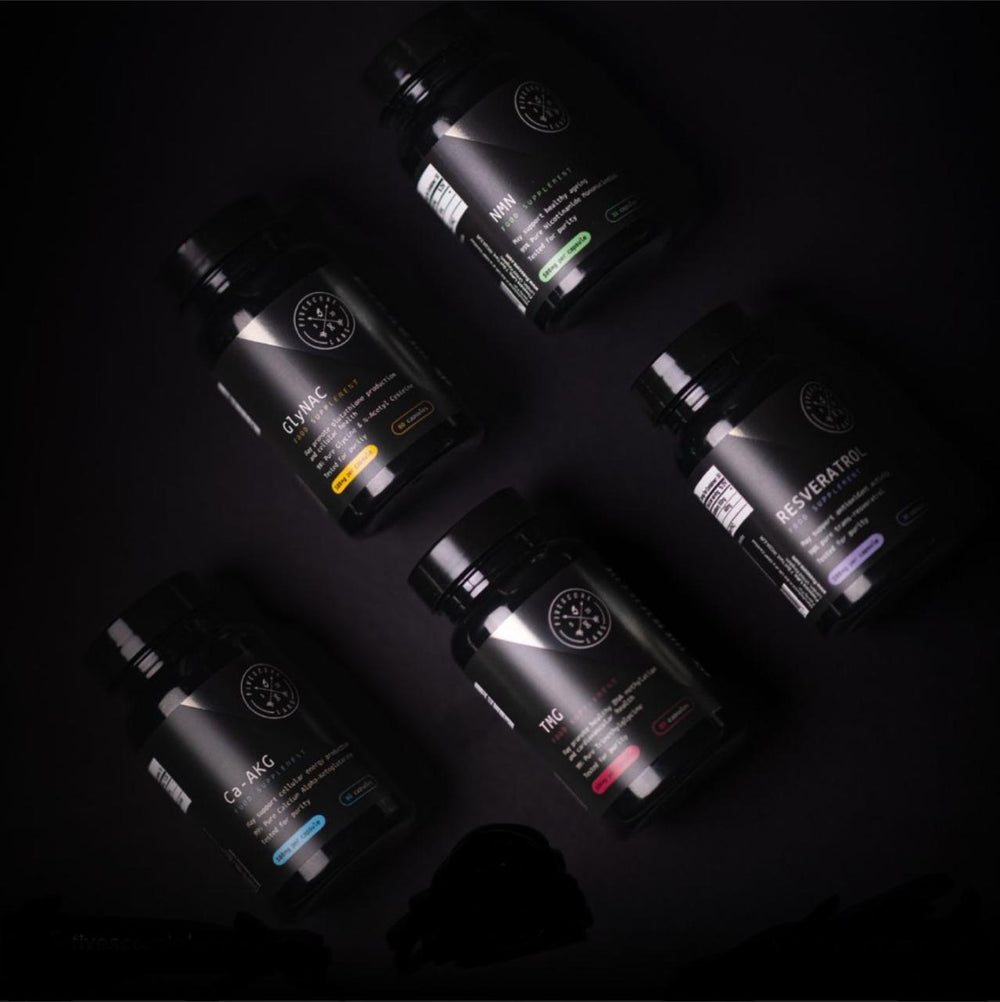What is Biological Aging and Can It Be Reversed?

In potential breakthrough research, experts are measuring cell and tissue decline to better understand how we age and to make better aging therapeutics.
Source: NMN.com
By Brett J. Weiss
How do we define aging? Historically, we’ve counted the number of times we live while the Earth orbits the sun (chronological age in years), but nowadays we can also think about the accumulation of cell and tissue damage (biological age). Right now, the aging research field is having a “eureka” moment — we’re rapidly uncovering how and why we age and potential aging therapeutic options. What we’re starting to see is that the topic of biological aging is a key to understanding the aging process and may provide a means to achieve milestone, aging-related discoveries.
Getting at the heart of crucial biological concepts will help us understand what researchers are doing in this defining moment in the study of aging. These topics range from the level of DNA molecules and chromosomes to cells and tissues of the body.
Chromosome Instability
Aging researchers have proposed that DNA damage that causes chromosome instability — where chromosomes lose structural integrity — is a primary cause of aging, affecting the quality of our cells’ molecular machines (proteins) that the DNA codes for. The underlying accumulation of DNA mutations, a concept referred to as “mutational load”, extensively contributes to chromosome instability. The idea is that with passing years, spontaneous, deleterious DNA mutations build-up resulting in “mutational load.” Although the aging effects of these mutations remain murky, such as how they alter proteins, DNA mutations seem to correlate with aging in tissues like skeletal muscle.
Telomere Shortening
Another hot topic in biological aging research is chromosome end length. Scientists refer to these chromosome ends as “telomeres”, which appear to decay with age. What we’re finding is that the enzymes that facilitate their repair (telomerase) can’t keep up with their fraying and decay as aging progresses. So, researchers have sought ways to measure biological age by looking at chromosome end health, however, how telomere length affects aging remains unclear.

(Medical Articles by Dr. Ray) When cells replicate, their chromosome ends called telomeres become shorter and frayed. Inherently, when cells replicate, their telomeres become shorter due to the inability of the DNA replication machinery to fully copy the ends of the DNA. To make up for this, the enzyme telomerase adds to the chromosome ends, however, the telomeres continue to disintegrate to some degree with replication cycles. Eventually, cells reach a state of non-proliferation called senescence due in part to reduced telomere length.
Senescent Cells
Another growing aging research concept is about cellular aging or “senescence.” When cells become senescent, that means they’ve reached an age-related, non-proliferating state. Researchers are still trying to figure out how senescence gets initiated. Interestingly, one way that cells become senescent appears to be linked to telomere shortening. Overall, quantifying senescent cell accumulation and burden on the body may provide an informative way to track biological aging. In fact, this method to measure biological aging may soon enter clinical research and medical practice, providing hope in elucidating the processes underlying aging.
DNA Methyl Groups
Another way to measure aging is based on epigenetics, which is based on the accumulation of molecules that ornament our DNA called “methyl groups.” Studies show that “epigenetically older” individuals with more DNA methyl groups have a higher risk for developing age-related diseases. So, to measure biological age epigenetically and determine age-related disease risk, researchers have developed tools to measure and analyze accumulating patterns of DNA methyl groups. These techniques measuring biological age can help to determine what variables play into how fast passing years take a toll on the body and may also lead to methods to possibly even reverse biological age by manipulating patterns of DNA methyl groups.
Mitochondrial Health
The mitochondria, commonly referred to as the cell’s powerhouse, can also provide a way to measure biological aging. Mitochondria exist throughout the body, as cells need them to generate energy. As we age, mitochondria lose their ability to generate energy, which can lead to fatigue and age-related metabolic disorders. Research has shown that taking supplements called NAD+ precursors, such as nicotinamide mononucleotide (NMN), can boost mitochondrial production and function with possible effects on increasing energy levels and preventing age-related diseases.
Vascular Health
The health of our blood vessels, or vascular health, can serve as biological indicators (biomarkers) that predict the occurrence of death (mortality). By applying what we know about blood vessel health and mortality risk, we can get a better idea of how fast people age.
These biomarker indicators of blood vessel health include measures of blood pressure and altered blood flow through vessels as well as blood vessel stiffness and the accumulation of plaque and calcium (calcification). Other blood vessel markers of aging not related to vessel structure and function include DNA mutations, markers of inflammation called interleukins, and protein-based indicators of blood vessel dysfunction. Perhaps in the future, by looking at these blood vessel biomarkers in younger adults, we can prevent age-related diseases and optimize solid health-related choices that improve each individual’s longevity.

(Hamczyk et al., 2020) Biological indicators of blood vessel aging include molecules like interleukins and other proteins, functional parameters like blood vessel stiffness and calcification, along with methods to measure aging like the Vascular Aging Index. Biological indicators of blood vessel aging, including molecules and proteins, and functional parameters like vessel stiffness allow scientists to use a measurement of aging in the body for research purposes and to prevent age-related diseases.

(Hamczyk et al., 2020) Chronological age, someone’s age in years, can be compared to their biological age that reflects age-related cell and tissue damage. Correlations between age in years and biological age can be measured based on blood vessel health. Delayed blood vessel aging in people who live over 100 years (centenarians) correlate with higher levels of blood vessel health even during their younger years.
Biological Aging is in its Heyday
From using methods to measure biological aging to finding ways to prevent and mitigate age-related diseases, biological aging research is in its heyday for helping scientists who study aging make discoveries. Not only will measuring biological age help with predicting age-related diseases, but it can also help us study how people age and what factors contribute to their aging. New molecules, like NMN and other popular NAD+ precursors, can also help us to minimize the damage from aging and prevent age-related deteriorating health. Combinations of NAD+-boosting molecules along with other anti-aging compounds may pave the way to lifespan extension therapies in the future. In due time, it’s probable that research will continue to provide insight to help us get a better handle on biological aging to improve our quality of life and help us live longer. Treating aging itself could also lead to breakthrough discoveries in age-related disease treatments for ailments like cancer, stroke, diabetes, and Alzheimer’s disease.

(Ferrucci et al., 2020 | Aging Cell) Numerous factors like mitochondrial health, epigenetics, and genomic instability contribute to aging and age-related diseases. The contributing biological components for aging and age-related diseases include protein degradation (proteostasis), cellular aging and non-proliferation (cellular senescence), reduced stem cell function, inflammation, deteriorating mitochondrial health, chromosome instability, nutrient sensing complications, and accumulation of adverse DNA molecular markers (epigenetics). These influences on aging lead to diseases that eventually induce disease (multimorbidity). Other contributors to these diseases include a genetic predisposition and environmental risks.
Belsky DW, Caspi A, Houts R, Cohen HJ, Corcoran DL, Danese A, Harrington H, Israel S, Levine ME, Schaefer JD, Sugden K, Williams B, Yashin AI, Poulton R, Moffitt TE. Quantification of biological aging in young adults. Proc Natl Acad Sci U S A. 2015 Jul 28;112(30):E4104-10. doi: 10.1073/pnas.1506264112. Epub 2015 Jul 6. PMID: 26150497; PMCID: PMC4522793.
Ferrucci L, Gonzalez-Freire M, Fabbri E, Simonsick E, Tanaka T, Moore Z, Salimi S, Sierra F, de Cabo R. Measuring biological aging in humans: A quest. Aging Cell. 2020 Feb;19(2):e13080. doi: 10.1111/acel.13080. Epub 2019 Dec 12. PMID: 31833194; PMCID: PMC6996955.
Hamczyk MR, Nevado RM, Barettino A, Fuster V, Andrés V. Biological Versus Chronological Aging: JACC Focus Seminar. J Am Coll Cardiol. 2020 Mar 3;75(8):919-930. doi: 10.1016/j.jacc.2019.11.062. PMID: 32130928.
At Fivescore Labs, we are constantly curating the most relevant studies and articles around human longevity sourced from the public domain.
